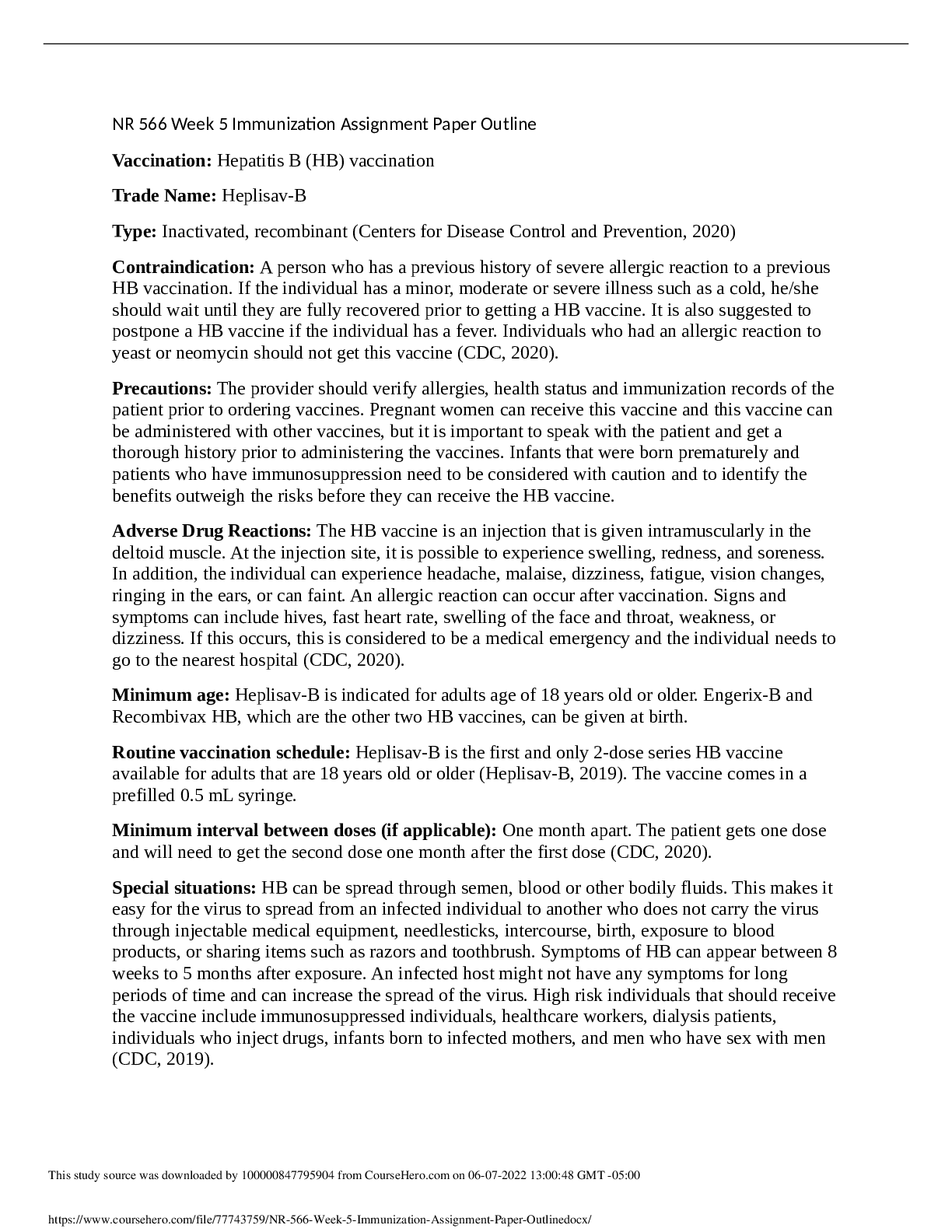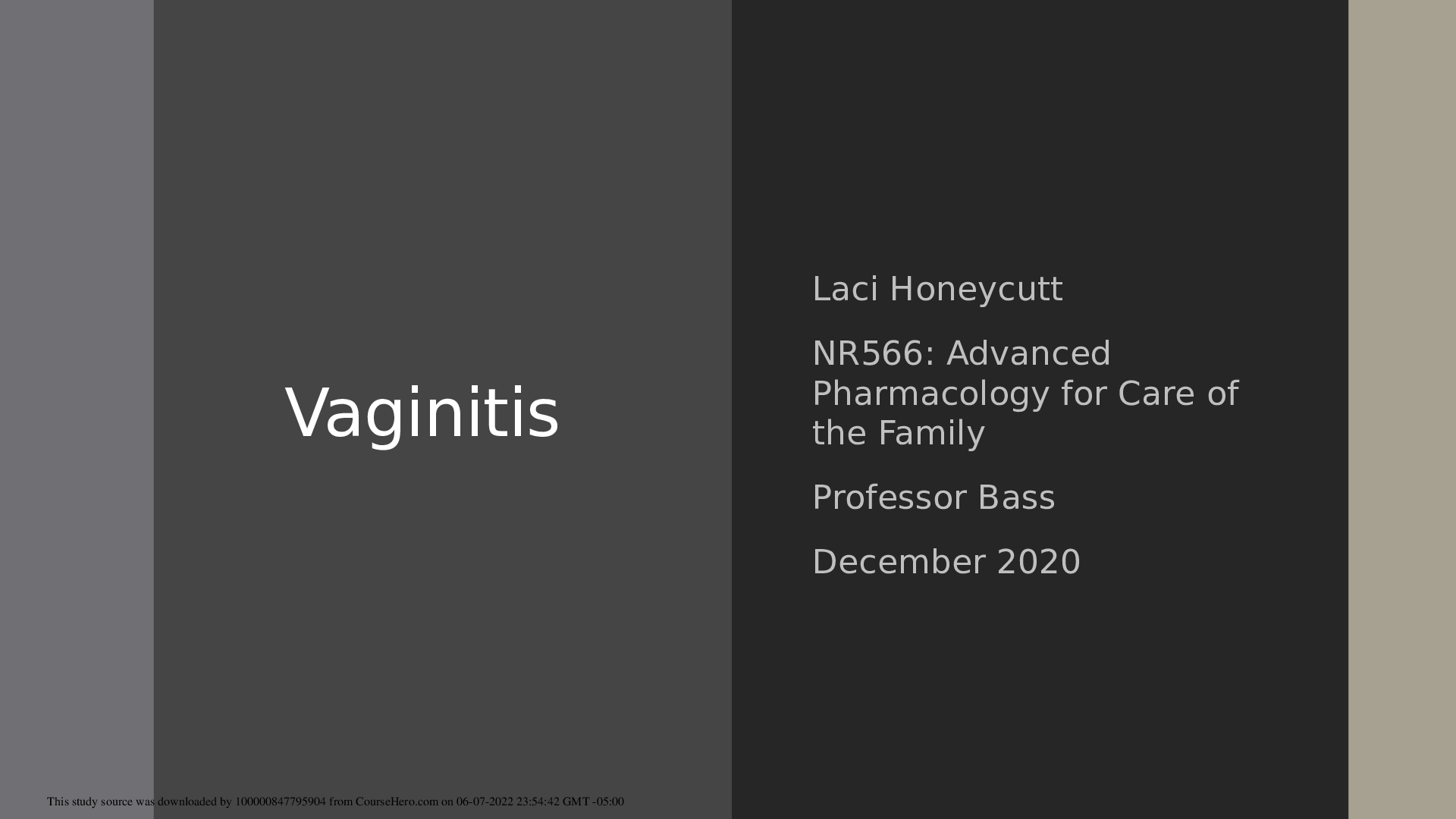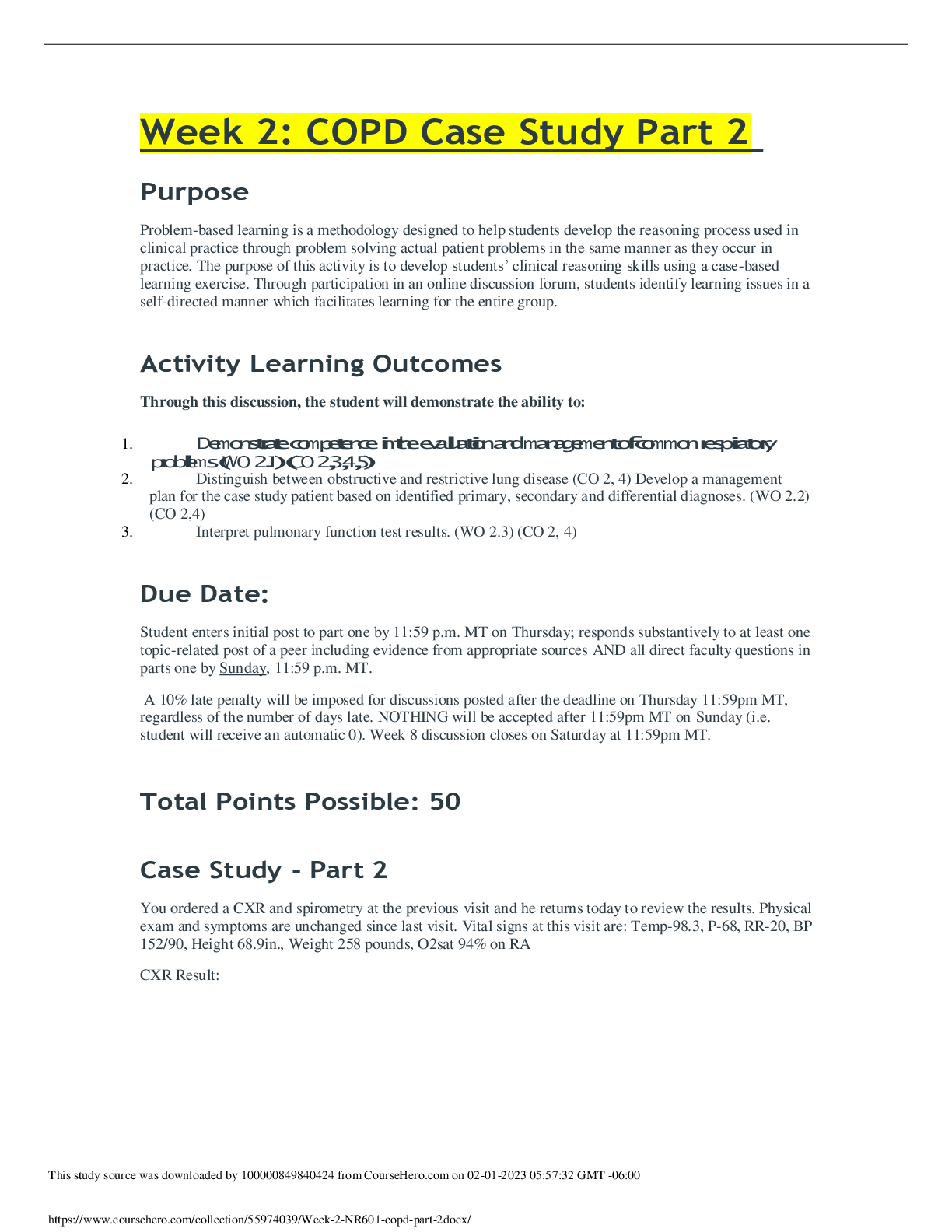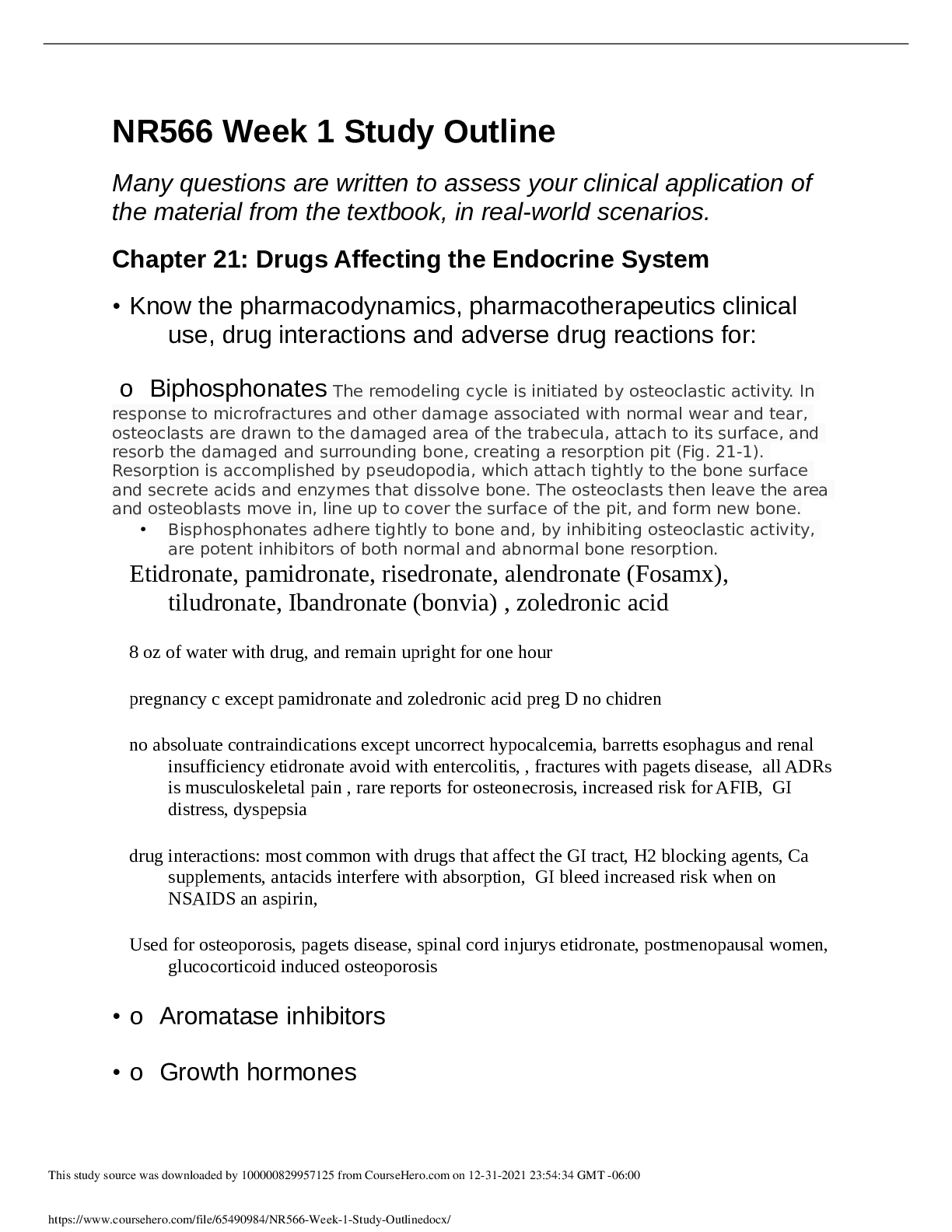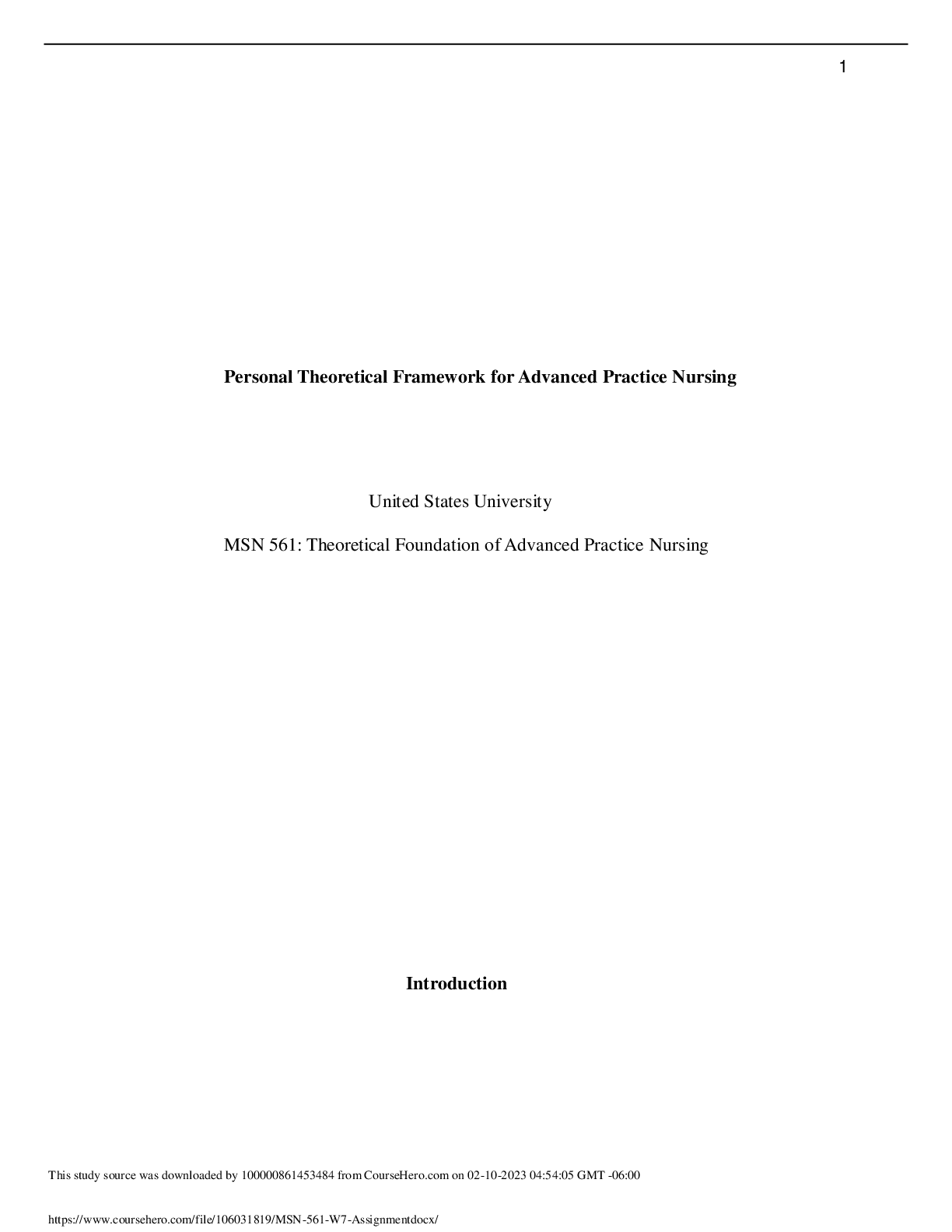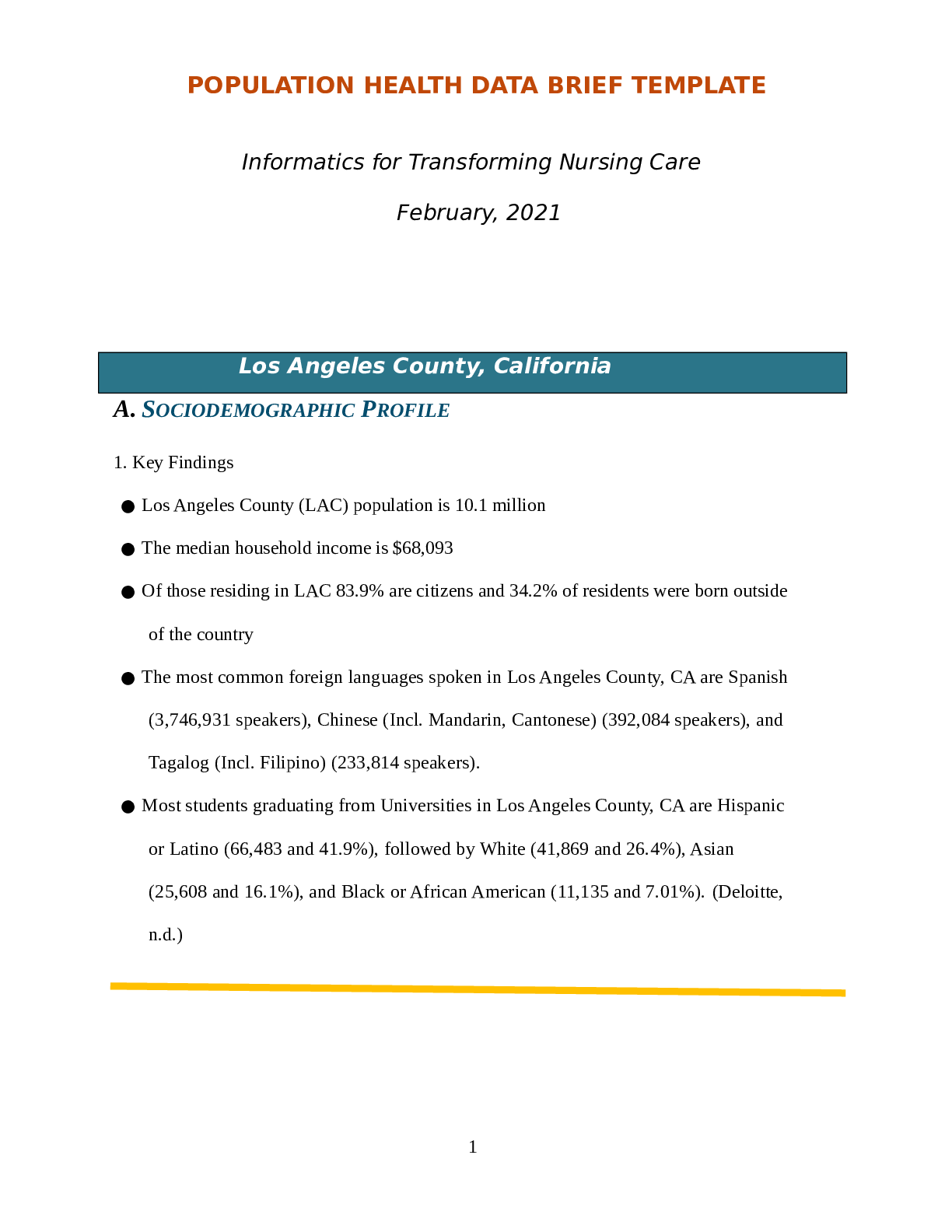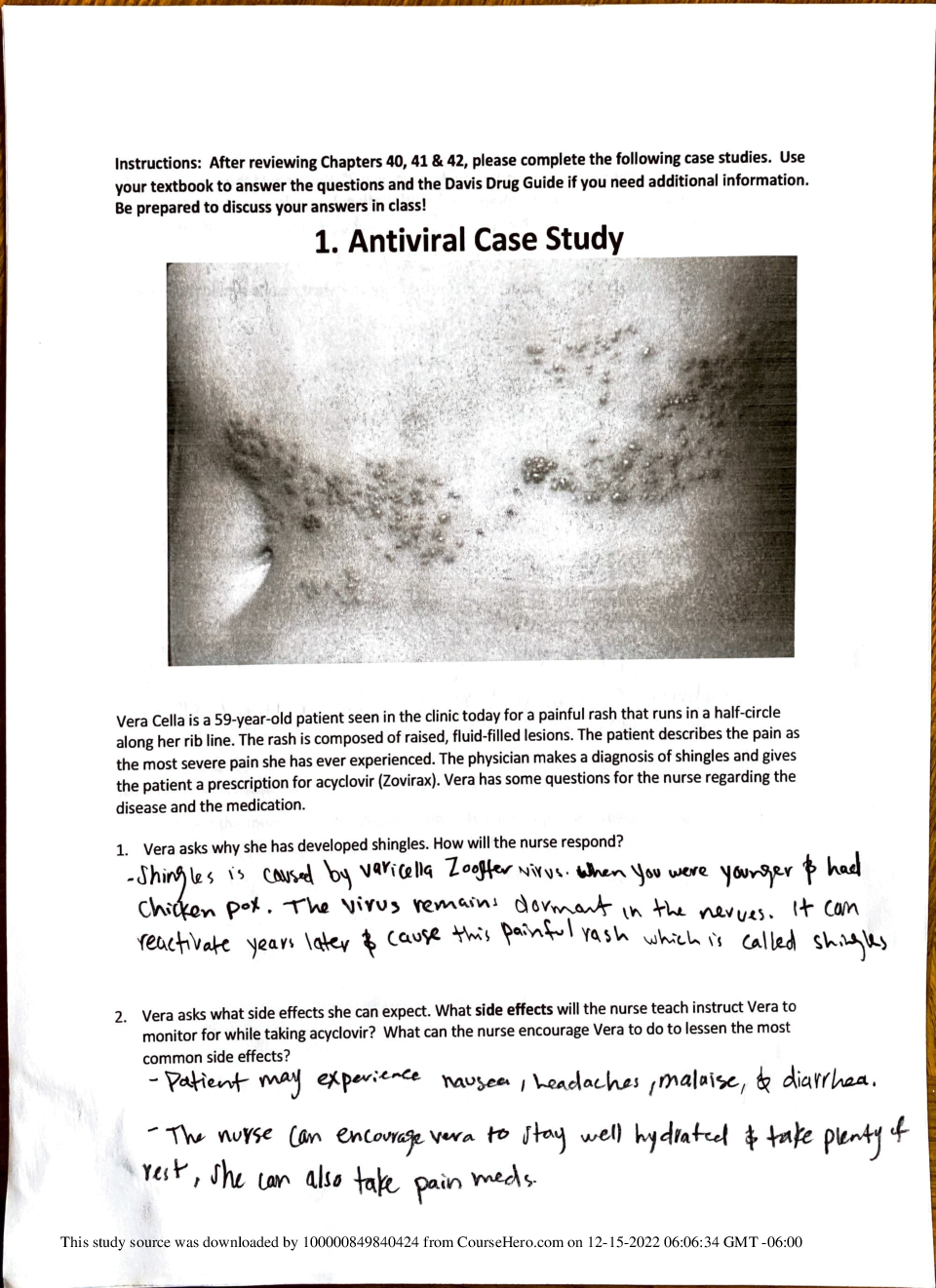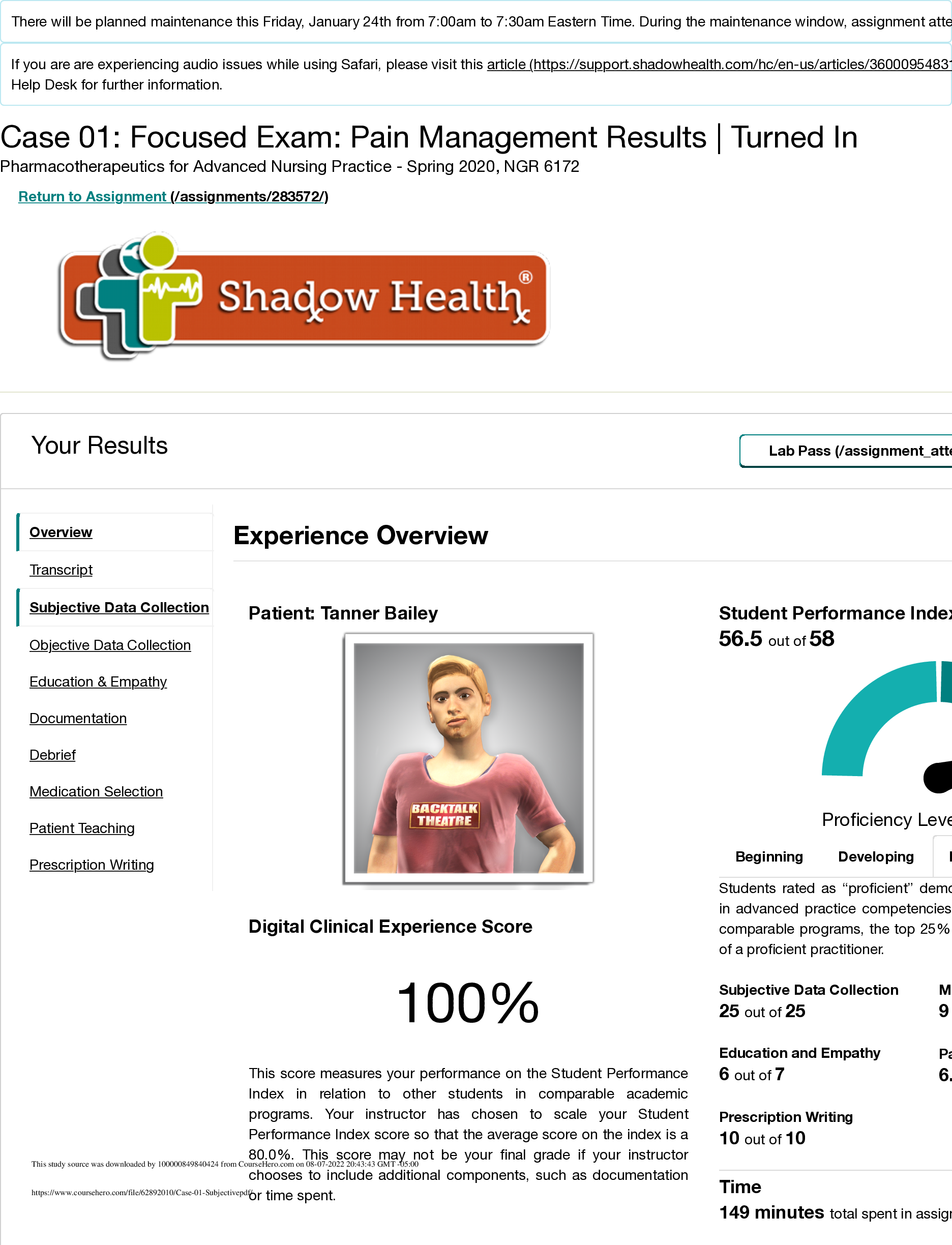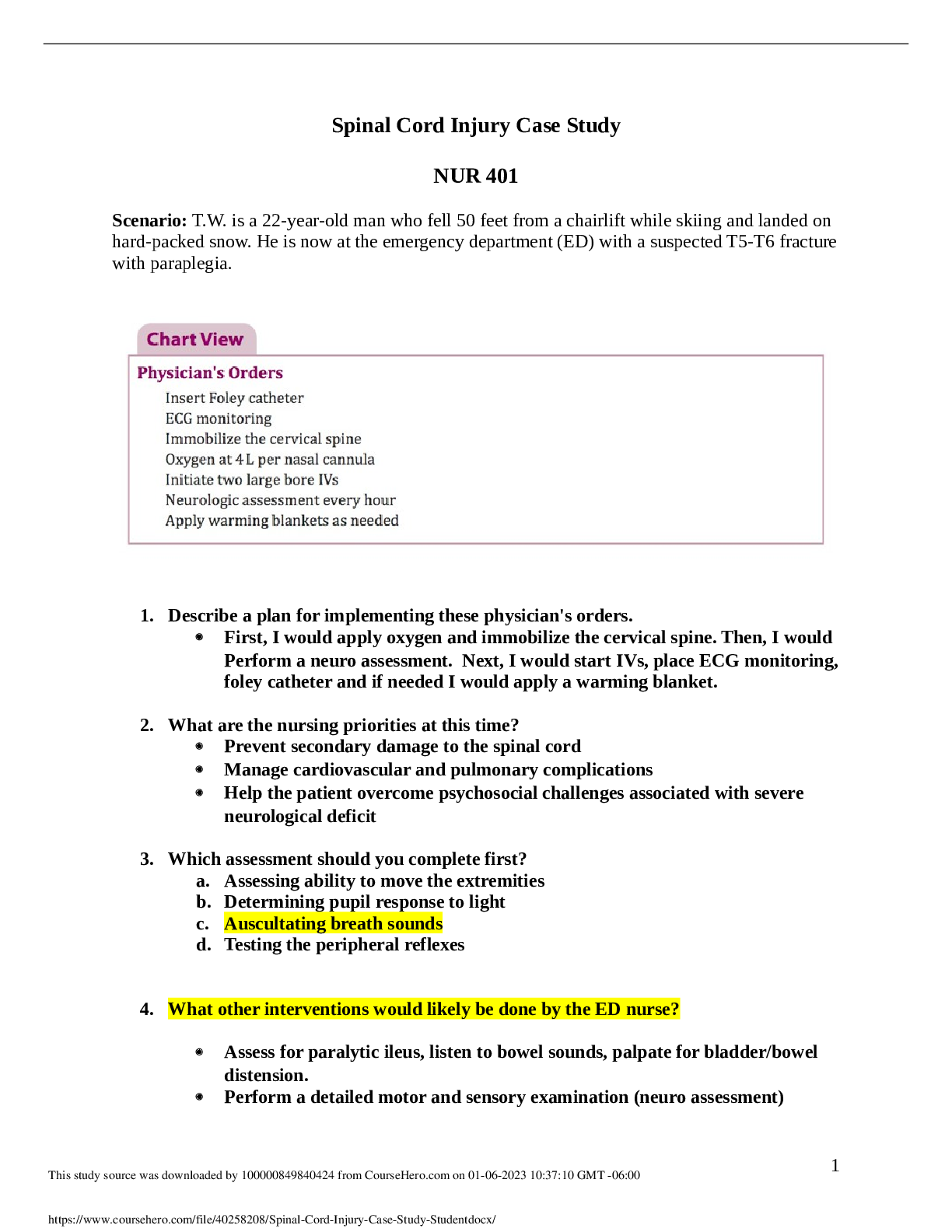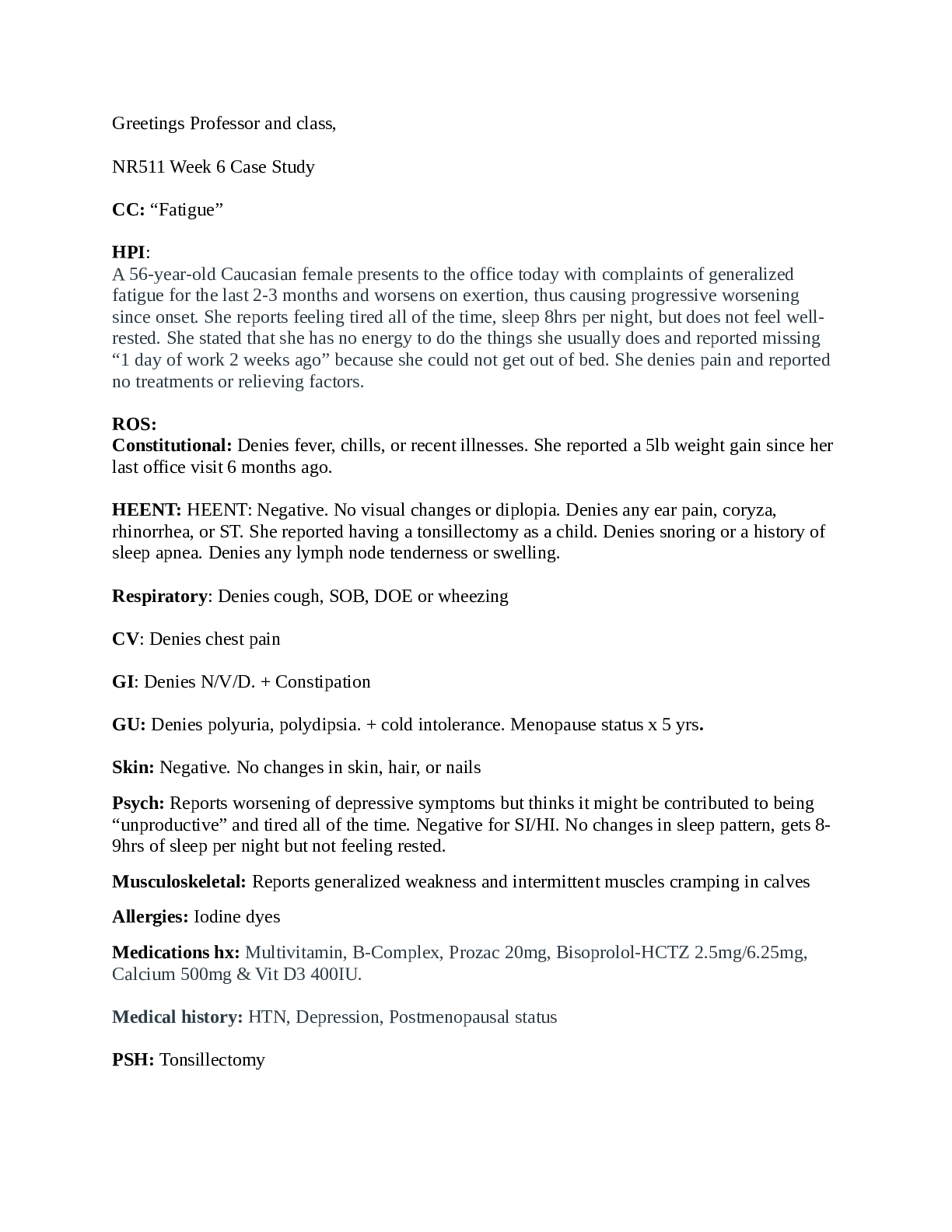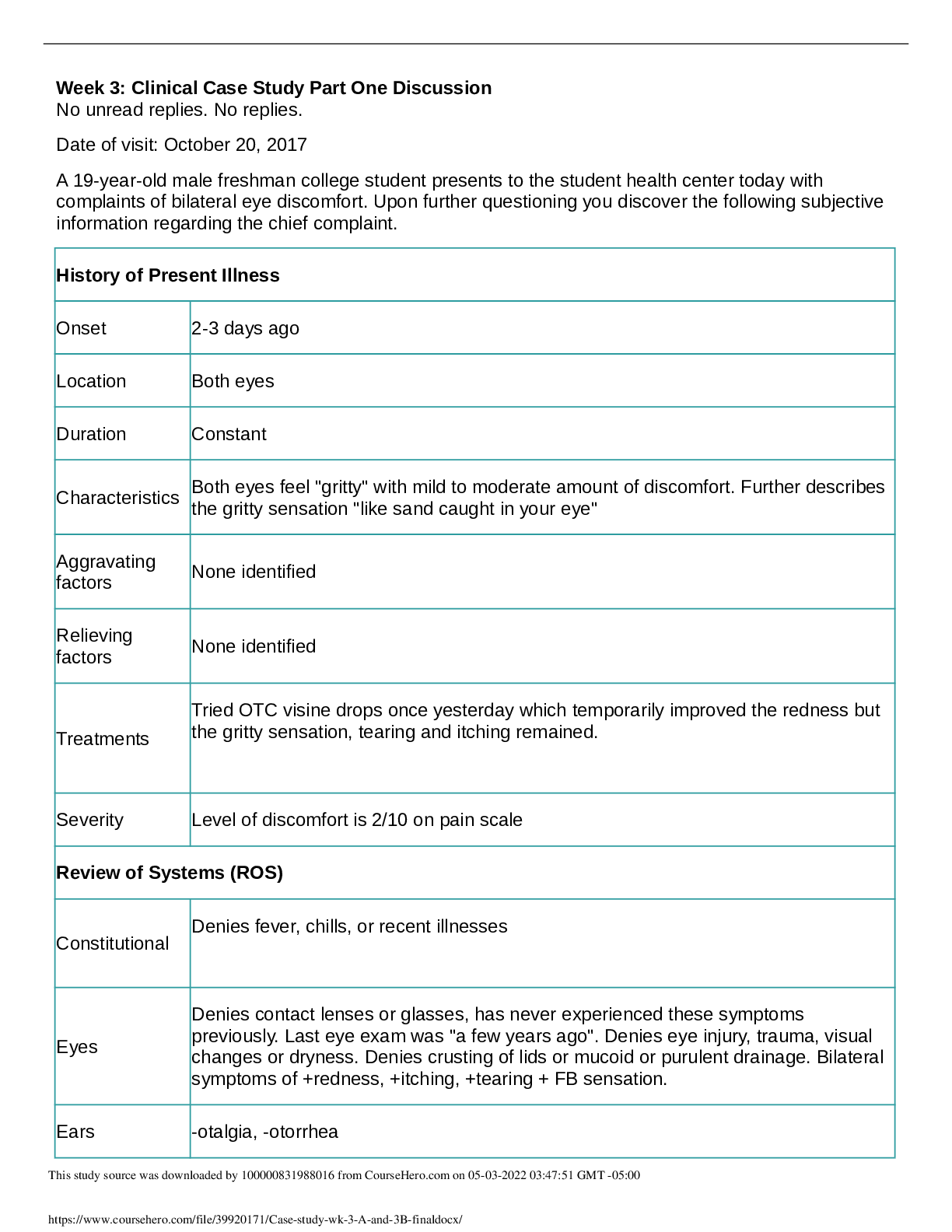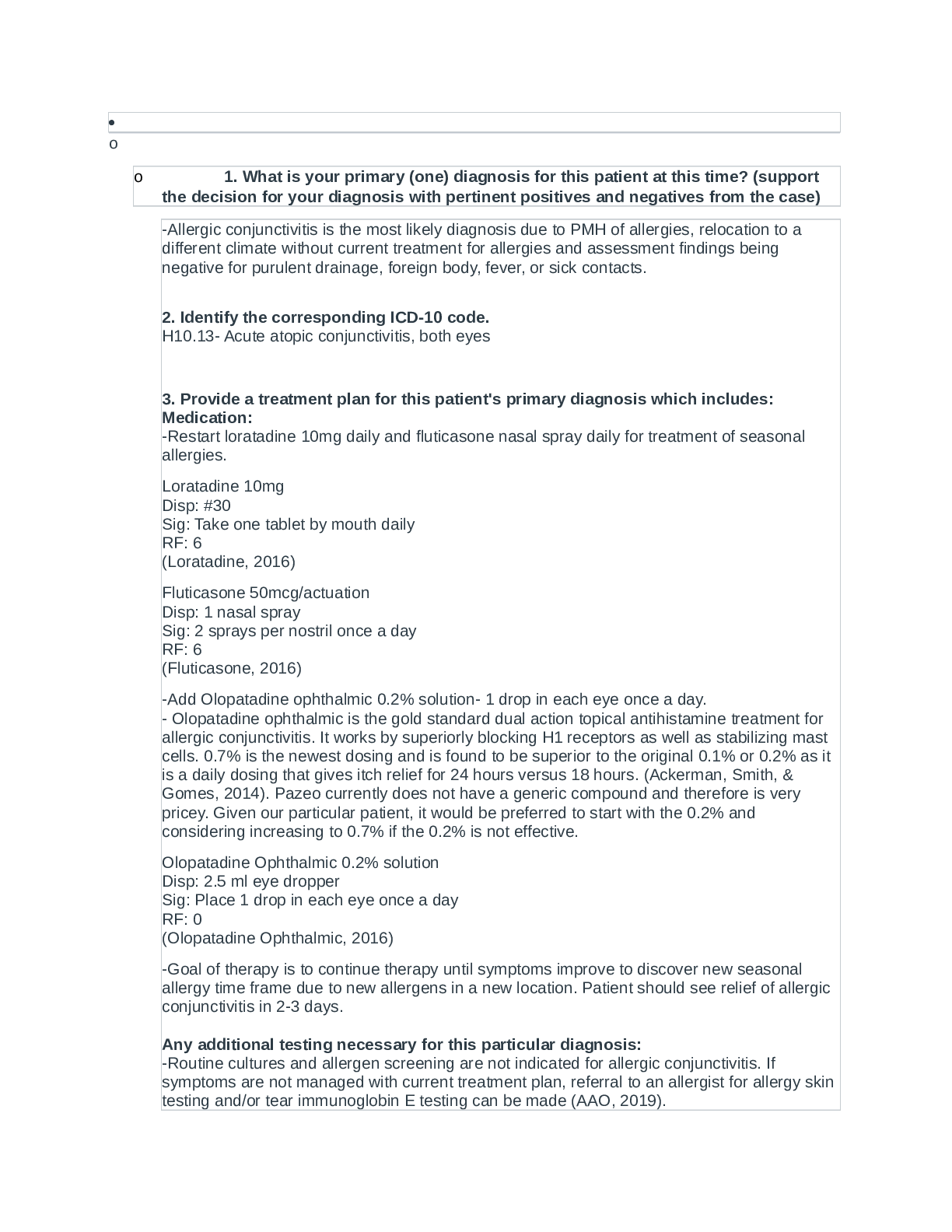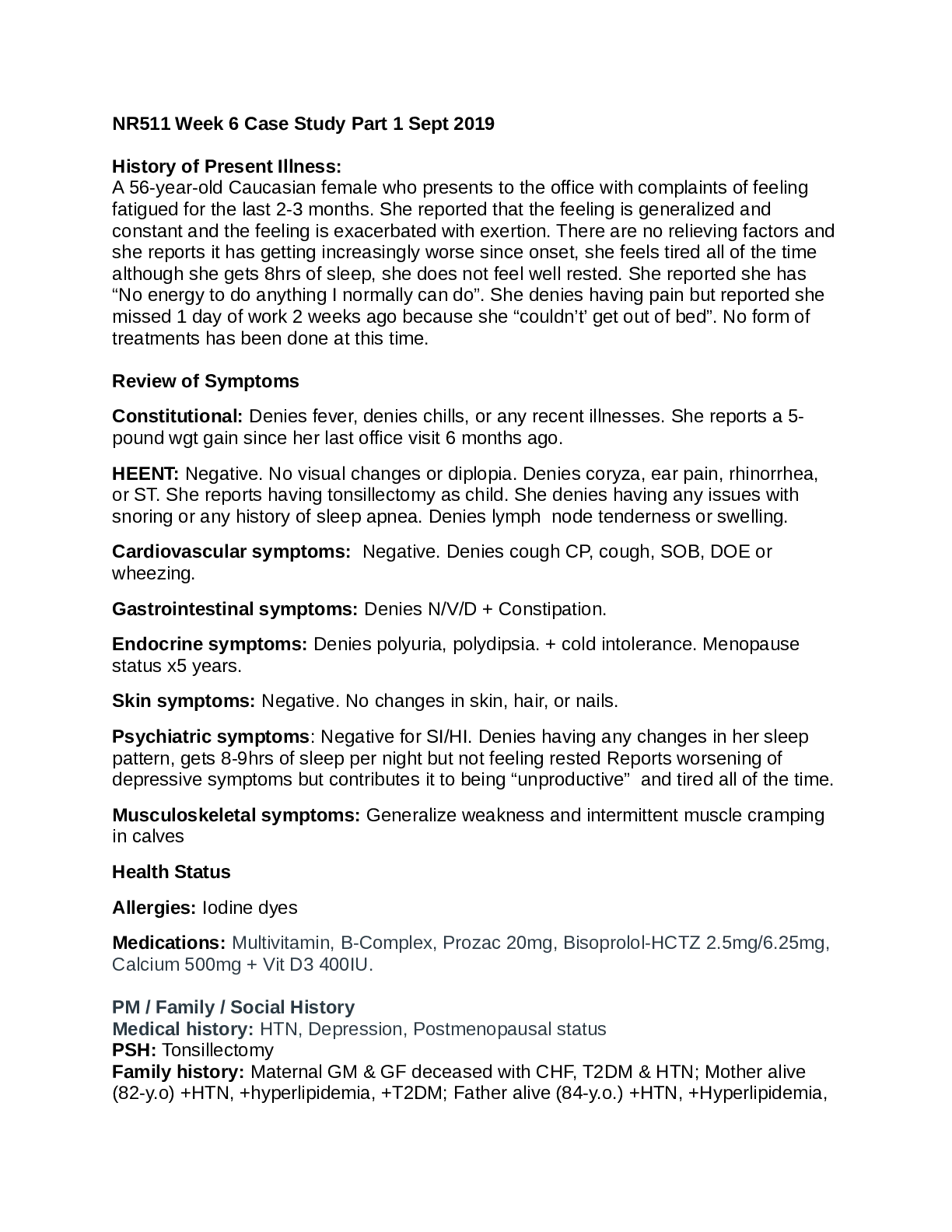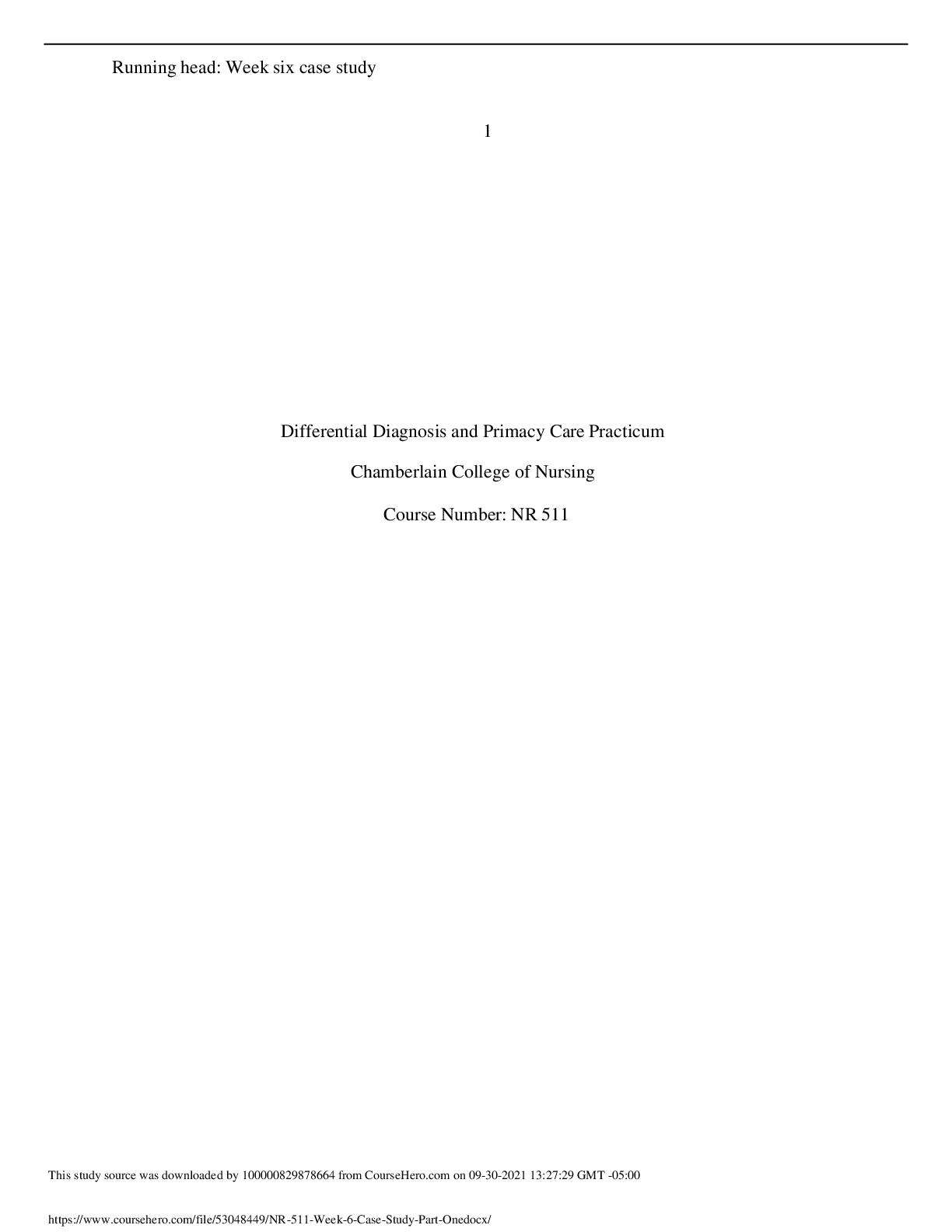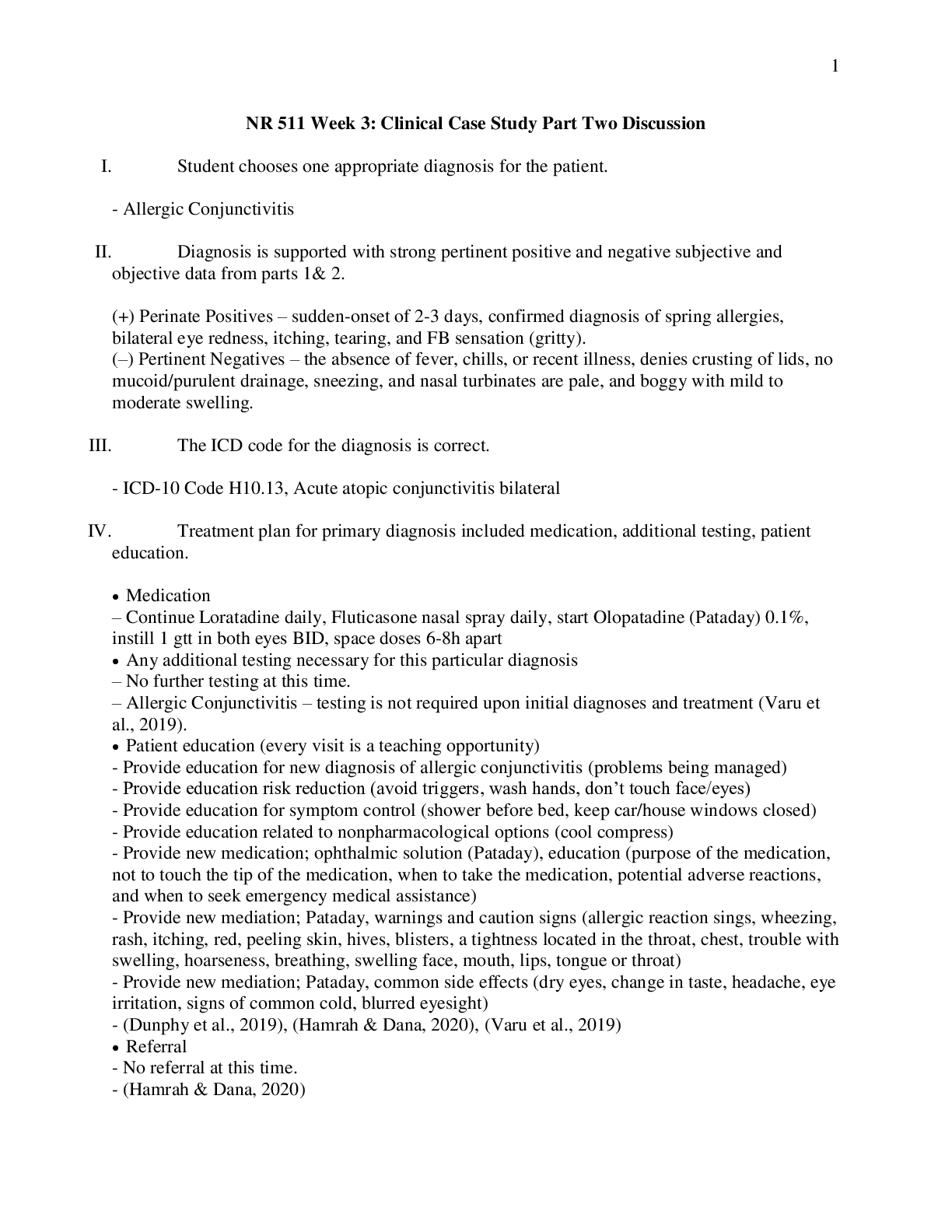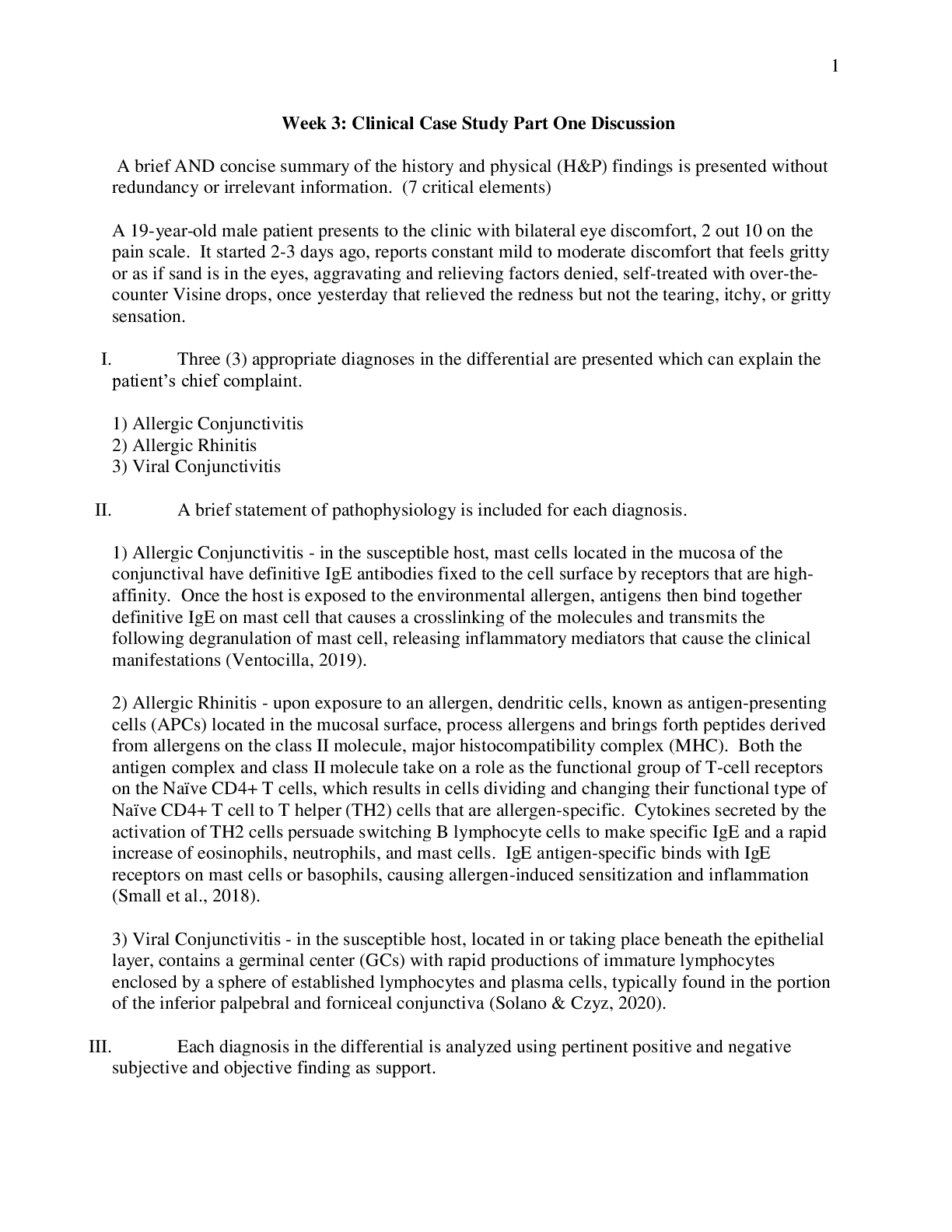*NURSING > CASE STUDY > (GRADED) NR 511 Week 3 Discussion: Clinical Case Study Part One Discussion (Initial Post, Responses) (All)
(GRADED) NR 511 Week 3 Discussion: Clinical Case Study Part One Discussion (Initial Post, Responses)
Document Content and Description Below
1. Summarize H&P: A 19yo male with a CC of acute onset of constant bilateral eye discomfort x 2-3 days. He states bilateral eyes feel “gritty, like sand caught in your eye” causing mild to m... oderate discomfort; 2/10 pain. He denies any aggravating factors. Yesterday OTC visine drops … temporarily relief of the redness. The gritty sensation, tearing and itching wasn’t relieved. He has Hx of springtime seasonal allergic rhinitis and takes Loratadine and fluticasone. Reports MJ use. ROS: Patient reports bilateral eye redness, itching, tearing and FB sensation. Reports intermittent nasal congestion which includes occasional runny nose. History of seasonal nasal allergies which is aggravated in the spring but is well … on loratadine and fluticasone nasal spray taken during peak season. PE: Bilateral photophobia and conjunctiva w/ diffuse redness and tearing. Mild to moderate swelling of nasal turbinate’s which are pale and boggy. 2. Differential Diagnosis and pathophysiology #1: Conjunctivitis: Patho: Conjunctivitis is where an allergen makes contact with the eye and causes the body to initiate a cascade of responses. Allergic conjunctivitis is … by an allergen that causes a type 1 hypersensitivity reaction. This reaction causes the body to release chemical medicators throughout the body that causes the symptoms of the allergic conjunctivitis. Particularly the inflammation of the conjunctiva. (Azari, A., & Arabi, A., 2020). #2 Corneal abrasion: Patho: A corneal abrasion is a disruption to the corneal epithelium. This can happen through a trauma or spontaneous occurrence. (Domingo, E., Moshirfar, M.& Zabbo, C., 2020). #3 Blepharitis: Patho: Blepharitis is inflammation at the margins of the eyelid. The inflammation is … anteriorly and posteriorly. Causative factors include surface ocular bacterial infections and skin conditions that cause inflammation. (Eberhardt, M. & Rammohan, G., 2021). 3. Analyze differentials #1 Allergic conjunctivitis Pertinent positive findings: Usually occurs + eye redness, +itching and +tearing. Occasional running nose. +History of seasonal allergies, +foreign body sensation and +photophobia. Visual acuity 20/20. No lymphadenopathy. Pertinent negative findings: Denies crusting and mucoid No burning sensation noted. Denies sneezing. -eye lid swelling. #2 Corneal abrasion: Pertinent positive findings: A sandy, gritty, or foreign body +photophobia, +watery eyes, +redness Pertinent negative findings: -unilateral eye pain, visual acuity 20/20, -FB on exam #3 Blepharitis: Pertinent positive findings: gritty or burning sensation in their +tearing, +redness, +itching and +photophobia. Pertinent negative findings: -blurred vision, -burning, -crusting eyes and -swollen 4. Identify additional tests and/or procedures #1 Allergic Conjunctivitis: According to Azari, A., & Arabi, A. (2020), allergic conjunctivitis is … on a clinical evaluation and doesn’t require diagnostic testing. However, the patient can have an allergy test completed to help identify what allergen causes the conjunctivitis. #2 Corneal abrasion: Fluorescein staining would be used to diagnosis corneal abrasions. First thing applied is the atheistic and then the fluorescein strip is placed into the eye. This dyes the eye in order to see any corneal epithelial defects. The light used to detect the epithelial defect is commonly called the woods lamp. (Domingo, E., Moshirfar, M.& Zabbo, C., 2020). #3 Blepharitis: According to Eberhardt, M. & Rammohan, G. (2021), diagnostic testing for blepharitis is the clinical examination. References Azari, A. & Arabi, A. (2020). Conjunctivitis: A Systematic Review. Journal of Ophthalmic and Vision Research, 15(3); 372–395. doi.org/10.18502/jovr.v15i3.7456 Domingo, E., Moshirfar, M.& Zabbo, C. (2020). Corneal Abrasion. Retrieved from: https://www.ncbi.nlm.nih.gov/books/NBK532960/. Eberhardt, M. & Rammohan, G. (2021). Blepharitis. Retrieved from: https://www.ncbi.nlm.nih.gov/books/NBK459305/ 1. Provide a differential diagnosis (minimum of 3) which might explain the patient’s chief complaint along with a brief statement of pathophysiology for each. The pathophysiology statement does not need to be extensive but it should not be vague either. Just list the diagnosis and follow with a pathophysiology statement for each diagnosis. Example: Diagnosis #1 -Pathophysiology statement Analyze the differential by using the pertinent findings from the history and physical to argue for or against a diagnosis. Rank the differential in order of most likely to least likely. (This is where you present your argument for EACH DIAGNOSIS in your differential using the patient’s subjective and objective information that was given). This is where you present your argument for EACH DIAGNOSIS individually using the patient’s pertinent subjective and objective information from the scenario. Example: Diagnosis # 1-Streptococcal pharyngitis Strep pharyngitis is at the top of my differential. A streptococcal bacterial infection should be ruled out in a patient presenting with pharyngitis to prevent serious complications such as rheumatic fever. Pertinent positive findings: ST, fever, nausea, lymph node swelling, bad breath {subjective findings}; posterior pharynx erythema, 3+ tonsillar edema, tonsillar exudate, halitosis, anterior cervical chain lymphadenopathy and tenderness, T 101.5 {objective findings} Pertinent negative findings: No known recent exposure to person with strep, no rash, no cough 3. Identify any additional tests and/or procedures that you feel is necessary or needed to help you narrow your differential. All testing decisions must … with an EBM argument as to why it is necessary or pertinent in this case. If no testing is indicated or needed, you must also support this decision with EBM evidence. This is where you identify, based on what you know thus far, test or test(s) that you would perform TODAY which would help you narrow your differential diagnosis. *Do not list all of the possible tests that can be done. You are being … on your diagnostic reasoning skills as well your ability to make decisions that are in-line with current practice recommendations. Just because a test is available does not mean it needs to be done. Example: Let’s say my patient’s CC was cough and that my differential … bronchitis and pneumonia. In this case, a CXR might be useful in differentiating the 2 conditions-so I am going to state that I want to perform a CXR today. However, remember that you have to have an EBM argument for this decision. So make sure you are telling the reader why this is the best choice based on the literature (i.e., it is not enough to say the test and cite the author & date). In this instance, my argument might look like this: “According to the Infectious Disease Society of America (2012) a CXR is … the gold standard for diagnosing pneumonia.” Keep in mind that you also need an EBM argument if you decide NOT to test too. [Show More]
Last updated: 1 year ago
Preview 1 out of 6 pages
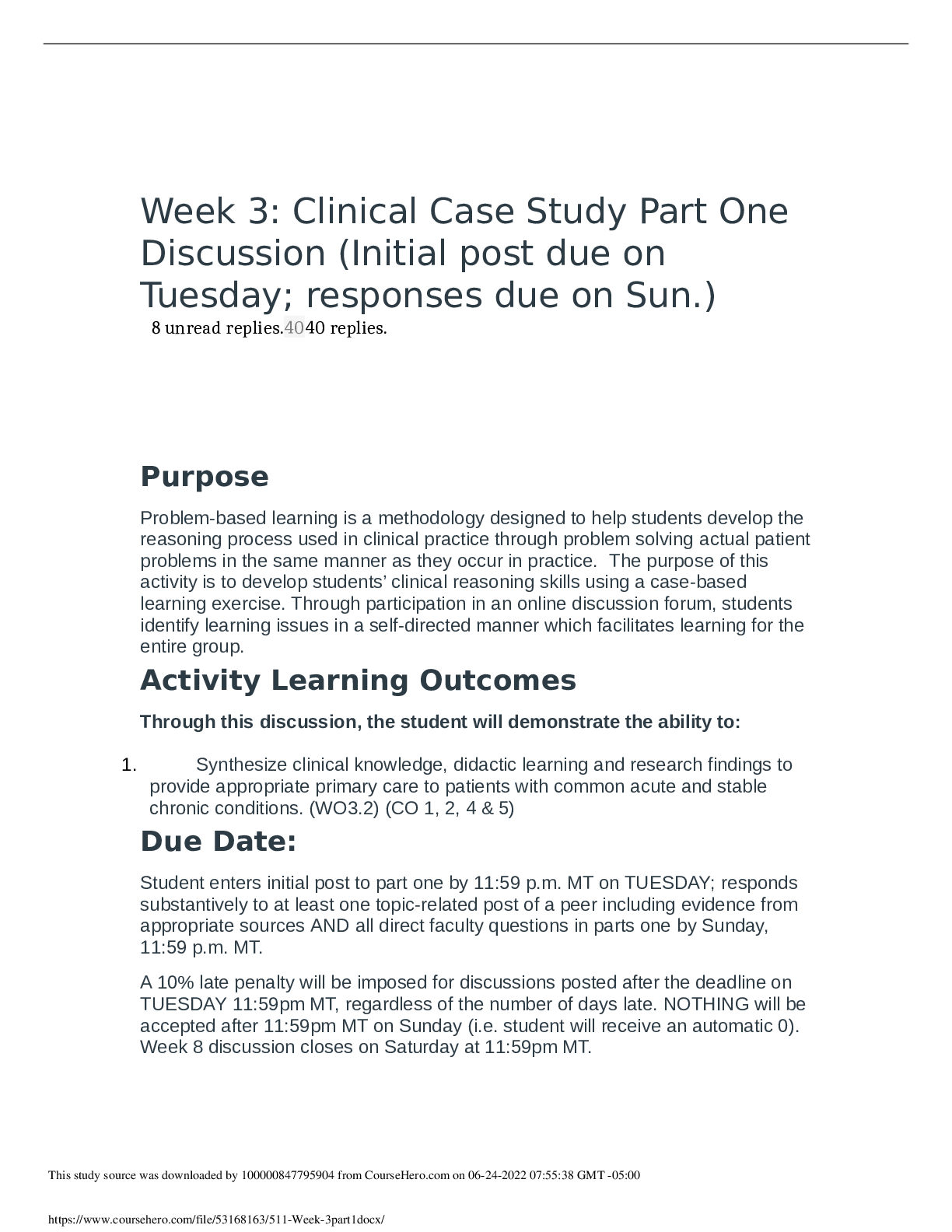
Reviews( 0 )
Document information
Connected school, study & course
About the document
Uploaded On
Jun 24, 2022
Number of pages
6
Written in
Additional information
This document has been written for:
Uploaded
Jun 24, 2022
Downloads
0
Views
32



